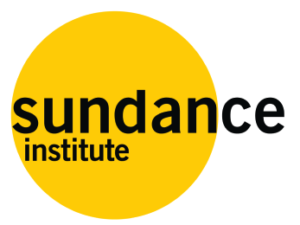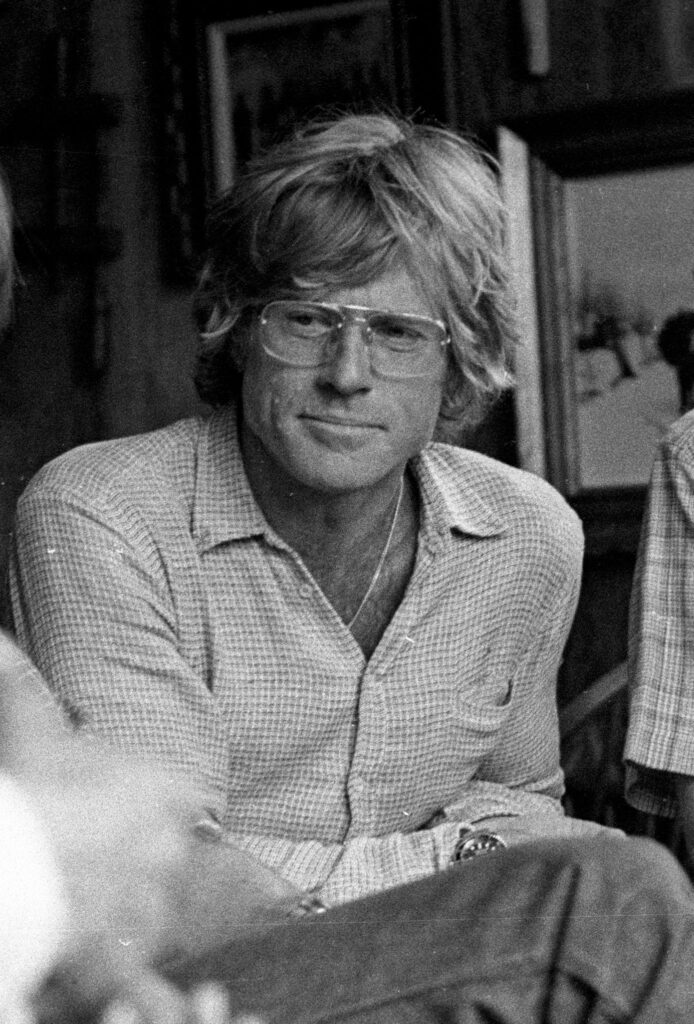
ROBERT REDFORD
Founder, Sundance Institute
1936–2025
The loss of our founder and friend Robert Redford, leaves us bereft and grateful for his life’s work. Bob’s vision of a space and platform for independent voices launched a movement that, over four decades later, has inspired generations of artists and redefined cinema in the U.S. and around the world. Beyond his enormous contributions to culture at large, we will miss his generosity, clarity of purpose, curiosity, rebellious spirit, and his love for the creative process. We are humbled to be among the stewards of his remarkable legacy, which will continue to guide the Institute in perpetuity.
“Storytellers broaden our minds: engage, provoke, inspire, and ultimately, connect us.”
ROBERT REDFORD
Founder, Sundance Institute
1936–2025
Robert Redford led a life defined by a love for nature, art, activism, and storytelling. After growing up in Southern California, he attended art school before becoming an actor on Broadway and in Hollywood. His role in the 1969 instant classic Butch Cassidy and the Sundance Kid firmly cemented his on-screen career.
That same year, Redford opened Sundance Mountain Resort, named after his newly iconic title role. He had purchased the land in Utah after driving through the beautiful Provo Canyon during a cross-country motorcycle trip in 1961, and he had even built a small cabin there with his own hands before creating the resort.
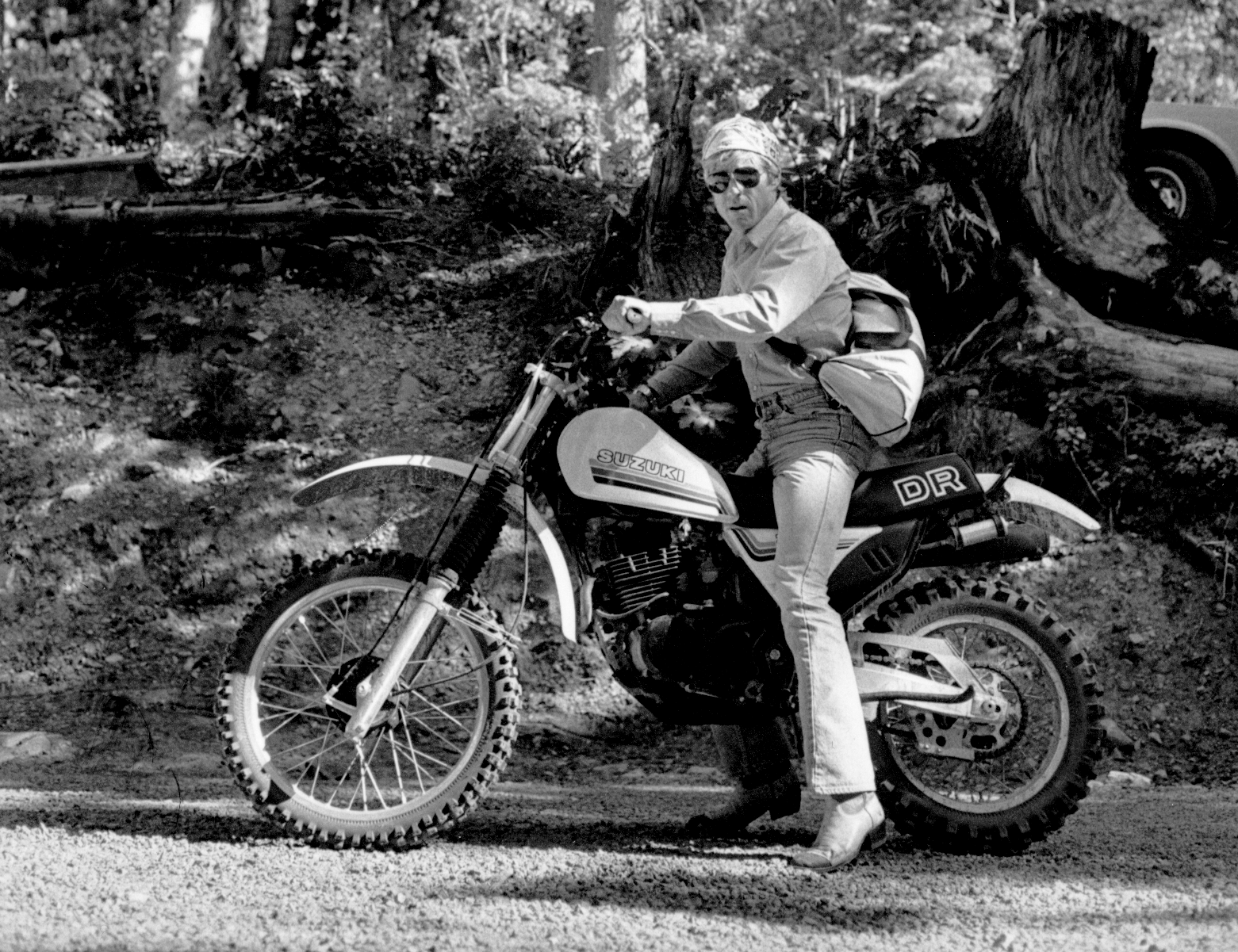
Sundance Institute’s president and founder, Robert Redford, during the summer labs | © 1981 Unknown for Sundance Institute
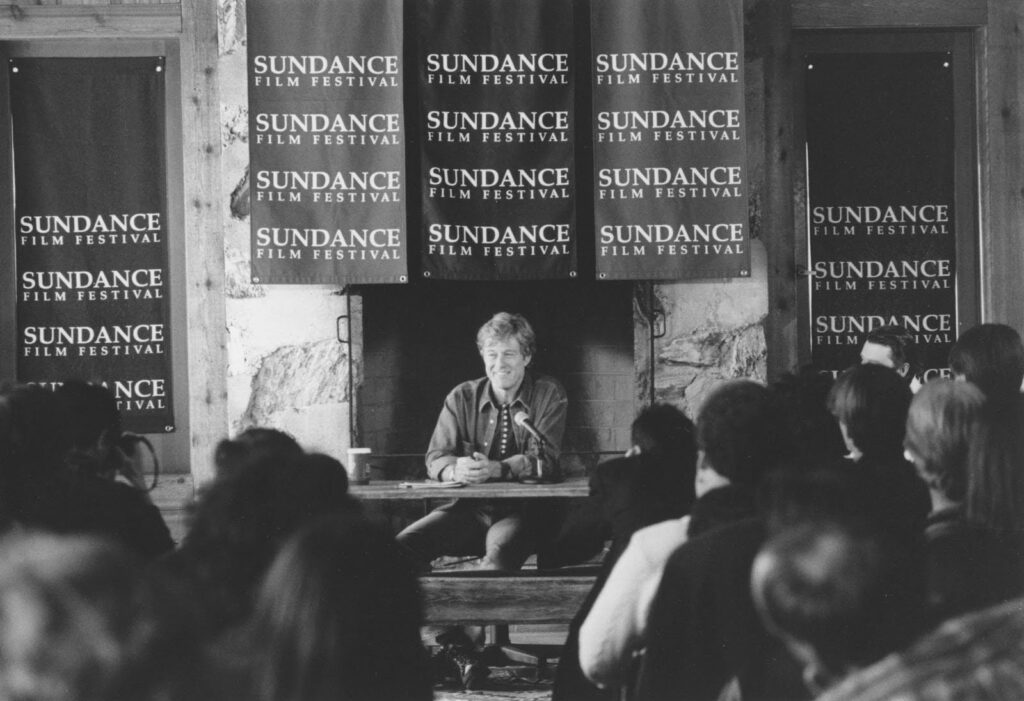
Robert Redford during the Festival press conference | © 1996 Ken Regan for Sundance Institute
This secluded place in the mountains later became a center for the work of Sundance Institute, which was born out of Redford’s desire to support independent filmmakers. “I wanted to have a sense of place, I wanted to create a sense of home, I wanted to have a sense of community,” he said. “I wanted to be able to do projects that were different from the run of the mill. That’s how this thing started.”
Though Redford enjoyed a fruitful acting and directing career (he would win the Academy Award for Best Director the following year for Ordinary People), his success didn’t deter him from recognizing that there were many other talented filmmakers who weren’t getting the opportunities they deserved, as the industry was being dominated by big studios that were only interested in making blockbusters.
“[I] could see and feel that there were other voices out there and there were other stories to be told … but they weren’t being given a chance.”
“[I] could see and feel that there were other voices out there and there were other stories to be told,” he said, “but they weren’t being given a chance. So I thought, well, without harming the industry, maybe we can just add to it.” Redford wanted to reassert the importance of craft, story, and the human being — which was sometimes lost in the art and business of making movies.
Together with a team of people dedicated to infusing independent art into the American film landscape, Redford established a series of filmmaking labs to help artists develop their voices, beginning with the first Directors Lab in 1981. If nothing else, these filmmakers would at least get their stories made, even if the work wouldn’t be distributed to a wide audience.
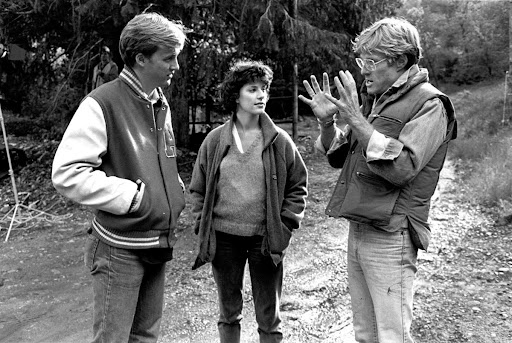
Lab participants and Robert Redford | © 1986 Unknown for Sundance Institute
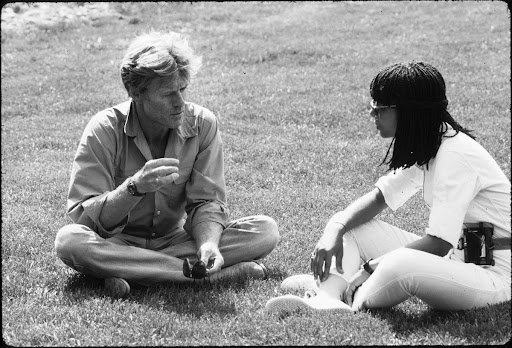
Robert Redford and lab fellow Euzhan Palcy | © 1985 Roger Christiansen for Sundance Institute
So experienced directors, writers, editors, actors, producers, and cinematographers came to Sundance Institute and donated their time to mentor emerging filmmakers — but this was not a school and there were no teachers.
To this day, fellows come to the Sundance Institute labs with their own needs for their projects, and as they do the work on their stories and collaborate with mentors, they create their own paths of self-discovery.
As the labs are meant to free artists from commercial pressures, they create a space where it is safe to take risks. Fellows are encouraged to push themselves, experiment, and even fail, because “risk … can be the catalyst that propels you forward.”
“Risk … can be the catalyst that propels you forward.”
The fact that this creative process takes place in nature was a very intentional decision stemming from Redford’s long-held belief that “art and nature combined make the world a better place.” An outspoken advocate who helped to pass many pieces of environmental legislation, Redford also designated 5,000 acres of land at Sundance as a wilderness preserve. To him, art and nature were deeply interconnected.
Through the labs on the mountain, and in all of the Institute’s work, a core mission has always been to provide a space for underrepresented communities. A focus on Indigenous artists has been a critical piece of the foundation since the very beginning, and that work later expanded to include a robust program of resources targeting artists from all different backgrounds — while at the same time expanding across genres.
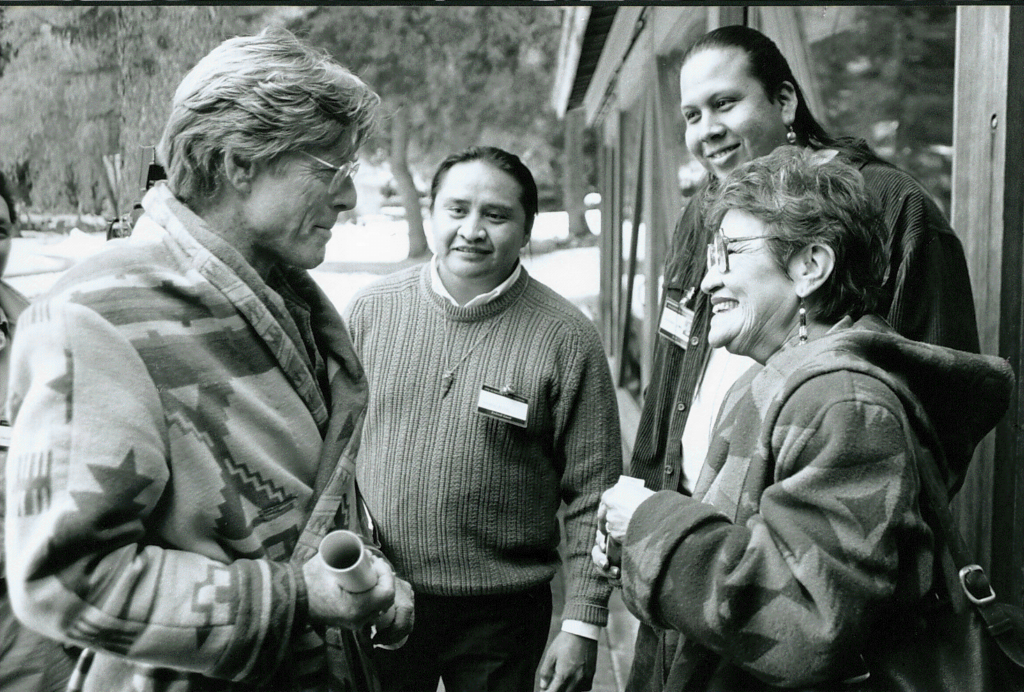
Robert Redford speaks with Norman Brown, Stephen Lewis, and Doris Skye at the 1994 Sundance Film Festival | © 1994 Sandria Miller for Sundance Institute
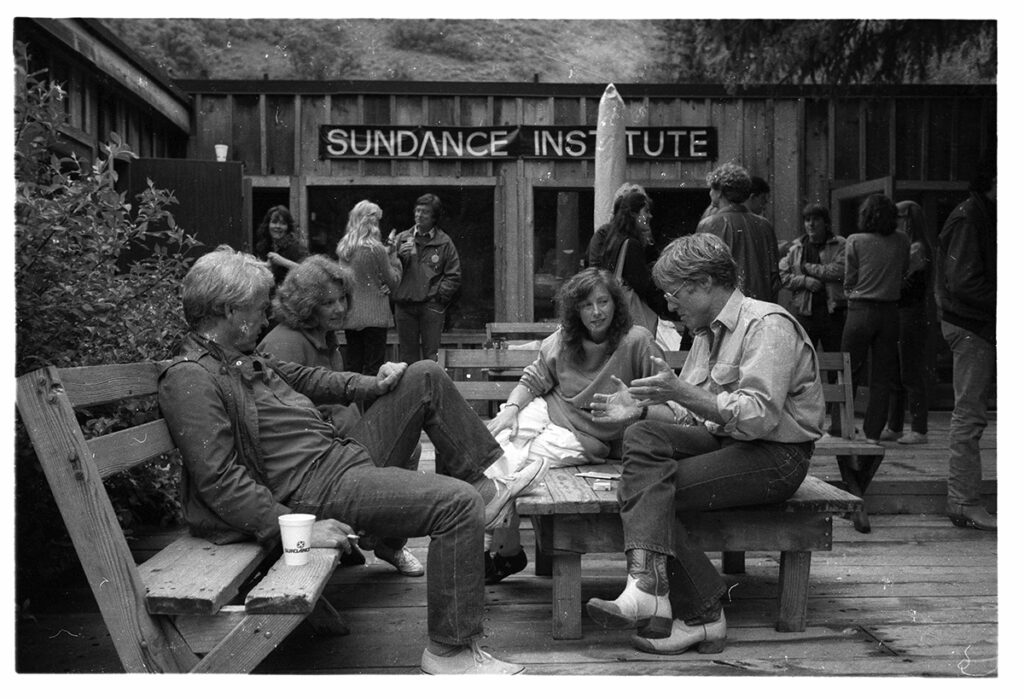
Creative advisors Tom Rickman and Carlin Glynn chat with Founding Senior Director, Artist Programs Michelle Satter and Sundance Institute founder and president Robert Redford during the 1986 Directors Lab | © 1986 Unknown for Sundance Institute
As the first lab participants developed their stories and eventually started getting their films made, Redford recognized the need for a way to get their work seen. So the Institute put on its first festival, assuming control of what was then the U.S. Film Festival in the small town of Park City, Utah, in 1985.
At the beginning, the intention was simply to gather artists together so they could share their work with each other and begin to build a community amongst themselves — and, Redford hoped, “Maybe if we were lucky, somebody else would come.”
Of course, not only did other people come, but the Sundance Film Festival exploded into a global phenomenon, and what had started as an against-the-grain idea suddenly became part of the mainstream. But even as the Festival grew exponentially and saw a rise in fanfare and celebrity, the team behind it stayed true to the original purpose, guided by Redford’s vision:
“I’m competing for what I consider to be a higher purpose: making the world safe for artistic diversity. If you want to bring about real, sustained change, you have to be constantly aware that you are not just taking care of yourself. You end up using whatever power you’ve gained to take care of yourself and others by creating a category that others like you can work in.”
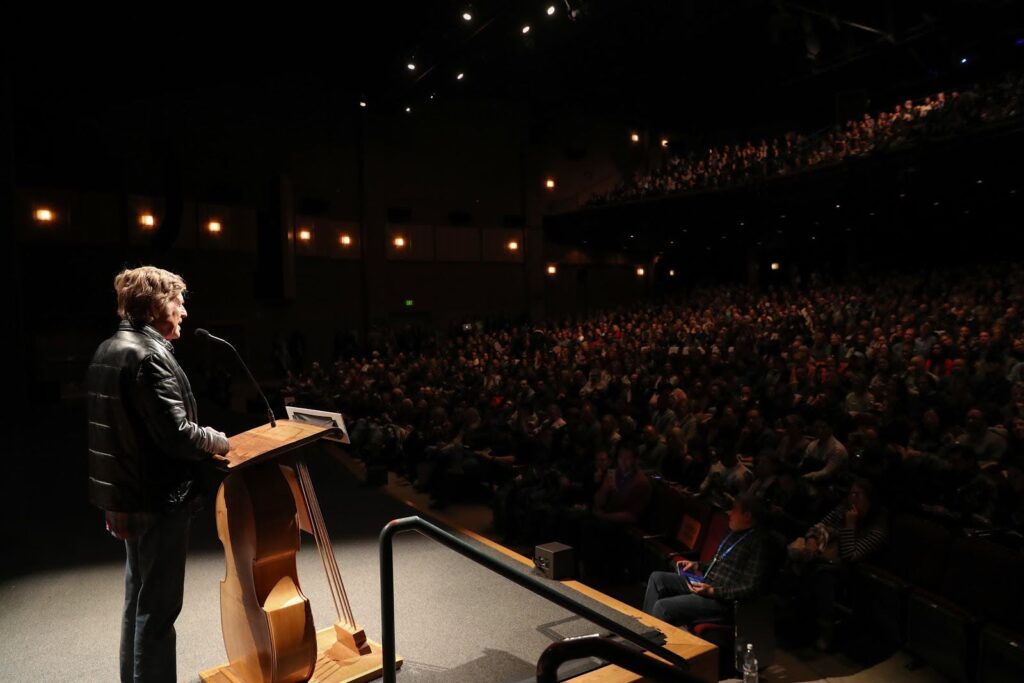
Robert Redford introducing the Day One screening of Blindspotting | © 2018 Sundance Institute | Photo by Ryan Kobane
“I’m competing for what I consider to be a higher purpose: making the world safe for artistic diversity.”
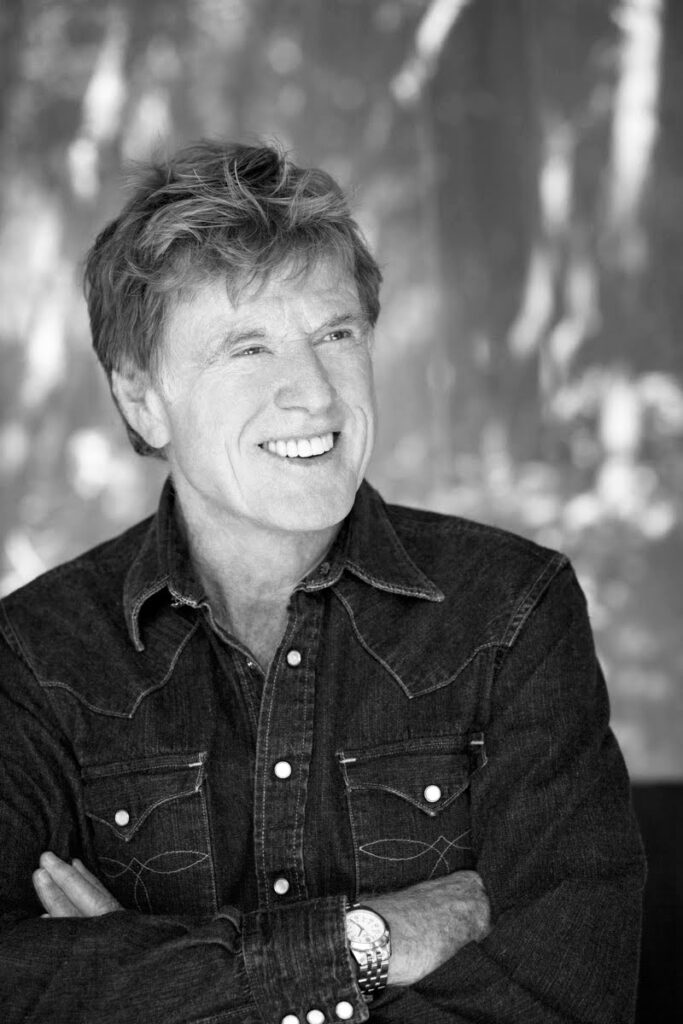
Portrait | © 2009 Kristina Loggia
Throughout his life, Redford received numerous awards honoring his work, including the SAG Life Achievement Award in 1996, an Honorary Academy Award in 2002, and a 2016 Presidential Medal of Freedom, which Barack Obama presented to him for a lifetime of art and activism that “continue to shape our nation’s cultural heritage, inspiring millions to laugh, cry, think, and change.”
For us, the legacy of Robert Redford will forever be connected with the vision, founding, and rich history of Sundance Institute and all that it has contributed to the world of storytelling.
All of us at the Institute will dearly miss Bob’s presence, and we are proud to continue his mission of creating and preserving a space for independent artists for many generations to come.
